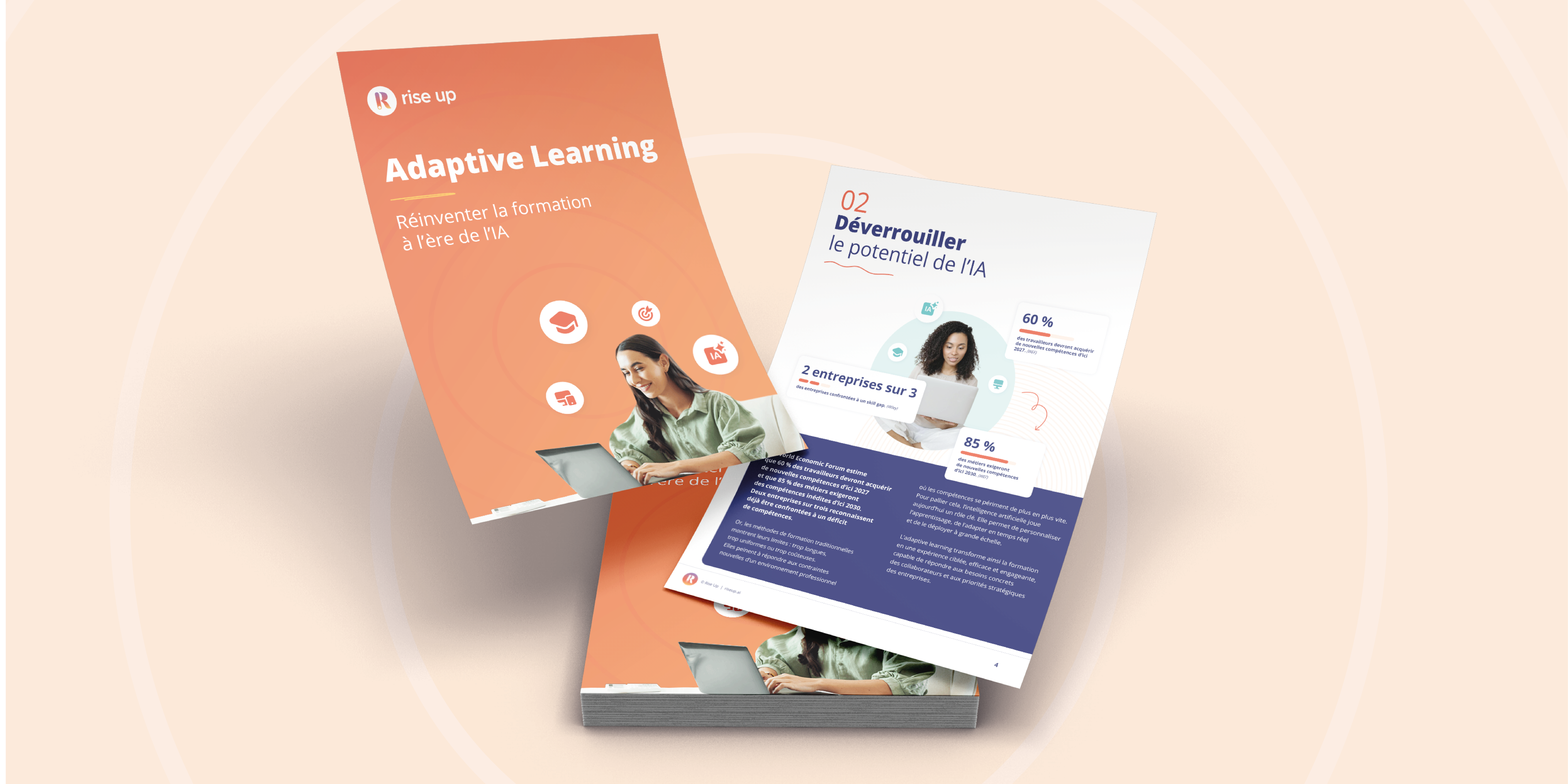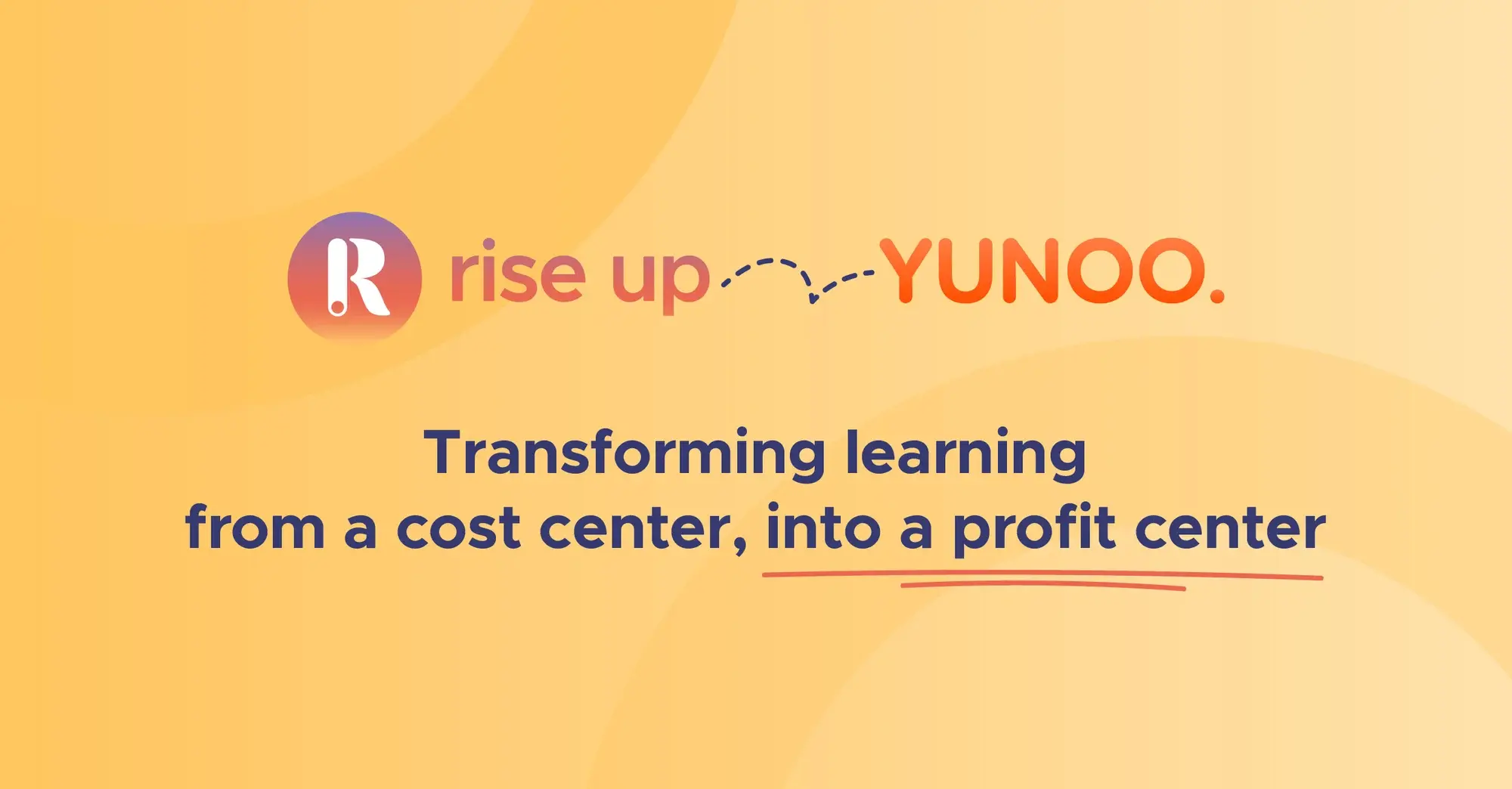How is teaching theory applied to blended learning?
6 minutes of reading | 2022-04-16
Blended learning is a hybrid training method which aims to make training as impactful as possible by combining in-person learning (which offers human contact, practical exercises and hands-on experience) with e-learning (with its accessibility, reduced cost, time saving potential and ability to monitor learner progress), while also making use of the different teaching methods available through digital learning (social learning, mentoring, mobile learning).

Learning to learn
How do we learn?
The brain weighs around 1.4 kg (and is composed of 75% water). It has 90 billion neurons and consumes 15 to 20% of the body’s energy alone. It’s our brain that allows us to learn, acquire knowledge and retain ideas that we can apply to real-life contexts. The brain is made up of white and grey matter.
White matter, which is composed of nerve fibres known as axons, links together the different regions of the brain. Grey matter is composed of neurons which communicate with one another through synapses.
When we learn, our neurons form connections. The message passes from one neuron to another, creating a “pathway” in our brain. The more frequently the neurons interact, the more we retain the information. Many neuroscientists are engaged in research in this area to understand how the brain functions and how it learns.
Does memory hold the secret to learning?
The brain does the learning, of course, but it would be nothing without memory. Here, we can make a distinction between short-term and long-term memory.
Short-term memory helps us to temporarily retain information, such as a telephone number or address. This information is transient and is quickly supplanted by other information.
Long-term memory, on the other hand, helps us to learn and store information in a more durable way. You can routinely improve your memory through repetition, practice and... sleep!
The role of interaction
So, now you know the role that the brain and memory play in our capacity to learn. However, there are other factors at play. For example, have you heard of decentering? Decentering consists of taking into account points of view other than your own and acknowledging that perceptions of a situation can differ. This inevitably requires peer-to-peer interaction. Communicating with a trainer or colleagues enables you to obtain additional information, which is essential if you want to consolidate the knowledge you’ve acquired.
Albert Bandura’s theory of social learning supports this notion and describes how, starting in childhood, we learn new behaviours by observing and reproducing the behaviour of others. According to the same theory, children imitate behaviour that rewards them rather than punishes them.

According to Richard J. Light:
“One of the most crucial factors in academic achievement in higher education is students’ capacity to form and/or participate in small study groups.”
Being part of a group boosts students’ self-esteem, stimulates discussion and thus facilitates information retention.
What’s more, social interaction is even more important when training is delivered digitally, as it reduces the feeling of isolation – often cited as the main downside to digital learning.
The role of support
Following on from the importance of interaction in digital training, support or mentoring is also important to maximise the learner success rate. Offering support involves working alongside the learner to help them achieve a target or goal.
In an education setting, we often talk about mentoring to define the support received by a learner from a third party to help them achieve their objectives. The primary aim of this is to alleviate the learner’s isolation and support them in their learning endeavours. Building on this idea of support, mentoring helps to reduce the abandonment rate.
Mentoring sessions can be scheduled by the trainer and learner (where possible) in line with the learner’s expectations and needs, which makes for a more personalised experience. Together, both trainer and learner can determine the frequency of the mentoring sessions and schedule regular catch-ups at various points throughout the course. The trainer should be on hand to respond to any requests made by the learner, whether it’s responding to a question, helping them on the e-learning platform or just providing some much-needed motivation!
The role of assessments
If you’ve ever got anxious before an assessment, stayed up all night revising or woken up in the middle of the night dreading an imminent exam, well, you’re only human. The idea of assessments has long been a source of dread and anxiety for many students. But assessments form a crucial part of the learning process.
Firstly, they help teachers to gauge students’ understanding of the course and, if need be, make the content more engaging.
Secondly, assessments benefit learners, too, by helping them to go over and consolidate the knowledge they have acquired. Thirdly, assessments can also be a way of motivating students. On the one hand, if they achieve a decent result, it gives them a sense of pride and boosts their self-esteem. On the other, if they receive a disappointing result, this can motivate them to work harder and do better next time.
While assessments are easy to run in-person (as written tests, group work or oral exams), they are a bit trickier to run remotely. The obvious solution is end of module quizzes, which help students to recap on what they’ve learned. And fortunately, thanks to blended learning, digital forms of assessment are increasingly resembling in-person forms of assessment. For instance, virtual classes lend themselves particularly well to group exercises and oral exams.
Download our expert guide: 'learning in the flow of work' and discover how your learners can access learning as they work without disruption to improve employee performance.





